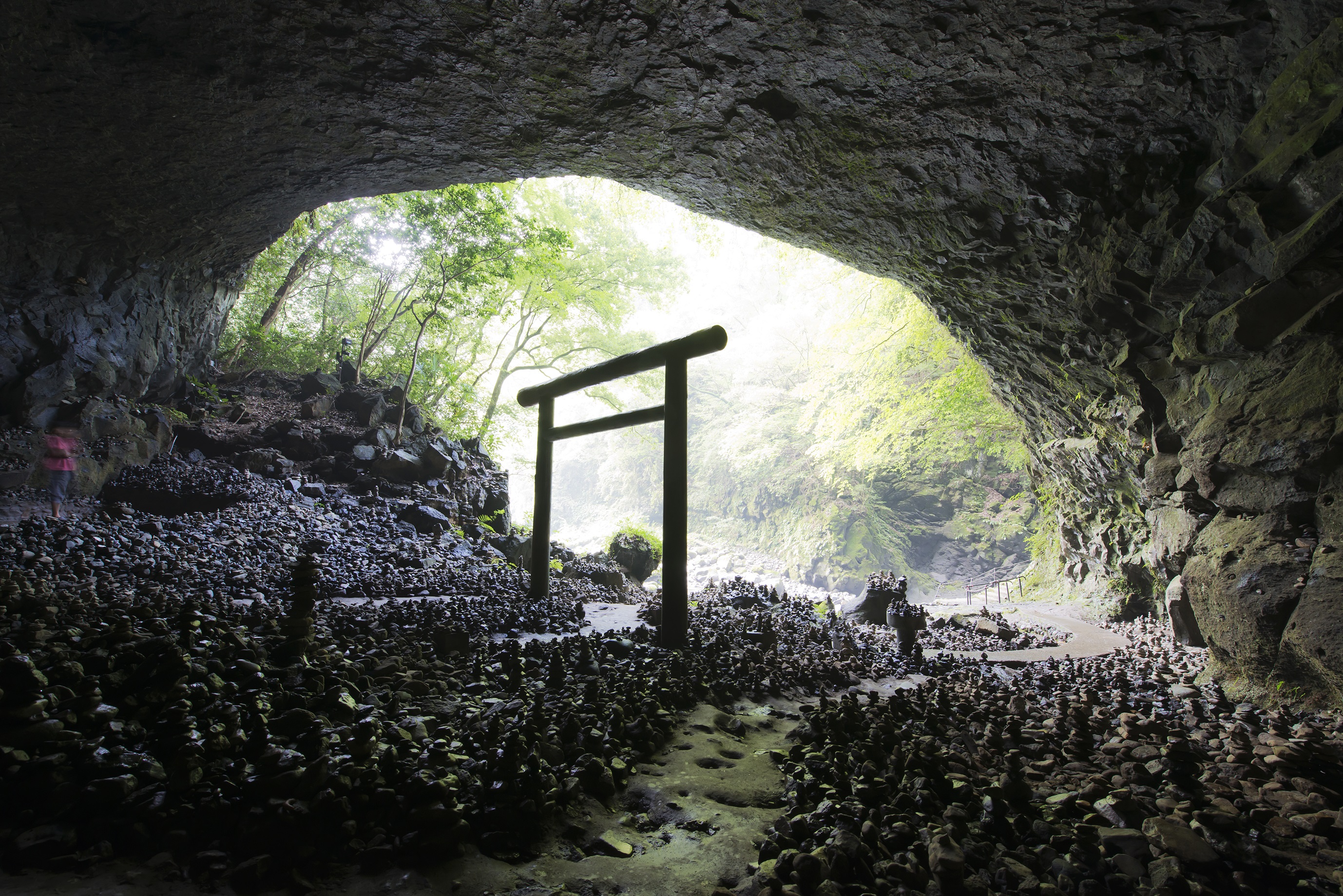Origin of ceremonies of the Imperial court connected with the sun
— Deciphering the myths of the Ama no Iwayato
Exploring the Kojiki
Updated on Oct 09 2018
Japan’s oldest book, the Kojiki. It dramatically illustrates the history of Japan from the beginning of the world, the appearance of the deities, to the Imperial succession. Behind each impressive episode, there exist numerous “mysteries” that are yet to be solved even today. By exploring each, we will think about the origin of Japanese beliefs and culture.

Takachiho, Ama no Yasukawara — the place where eight million troubled deities supposedly congregated at the riverbed when Amaterasu hid in the cave.
What does the Ama no Iwayato myth signify?
Amaterasu is regarded as the ancestral god of the Imperial family. She is also the ruler of Taka-Amanohara and the god of the sun. An episode related to this is as follows:
One day, her brother Susanoo visited Taka-Amanohara, but unable to stand his violent behavior, Amaterasu shut herself up in a cave. Suddenly, both Taka-Amanohara and the Earth turned very dark.
The troubled gods consulted each other, and held a festival. They made a mirror and stone beads to draw Amaterasu out of her cave. A female god called Ame no Uzume danced naked and the other gods cheered her on, making a racket. Amaterasu, curious about the racket, opened the cave entrance a little.
Not missing the chance, a mighty deity pulled Amaterasu out of the cave. After that, Taka-Amanohara and the Earth became bright again. This tale can be seen as a mythologized telling of people’s fear and surprise regarding solar eclipses.
Eclipse myths found in Southeast Asia
Myths about the origin of solar eclipses and lunar eclipses are found widely in Southeast Asia. There were three brothers (or sisters) and when the elder two died they became the sun and the moon, but the younger sibling behaved badly became a monster.
It is said that solar eclipses and lunar eclipses happened as a result of the younger brother, who became a monster, trying to swallow his older brothers. Amaterasu also has a younger brother, the moon god. It can be said that this is similar to the Southeast Asian myth, in that the sun god hides as a result of the youngest brother Susano-o acting violently.
Myths that symbolize the sun, festivities of the Imperial court
In relation to natural phenomena, there is another view that what was being mythologized was not the lunar eclipse but the winter solstice, when the time from sunrise to sunset, the duration of the sun’s appearance, is shortest each year. The winter solstice is thus the time when the day is shortest and the sun is weakest. From the next day, the day becomes longer, so the winter solstice can also be called a day that symbolizes the sun’s resurrection or rebirth.
The rituals that are supposed to have been carried out based on the winter solstice in accordance with the sun’s death and rebirth are the Chinkonsai (requiem ceremony performed by the emperor), and the Daijosai (a ceremony related to the succession to the throne). What the gods did in an attempt to bring out Amaterasu (such as making mirrors and comma-shaped beads, offering of dances, and so on) is very similar to the rituals of the Imperial court.
Whether the myth of the deity hiding in the cave was created first, or the rituals came first and were then mythologized, we cannot say for sure, but it is clear that they both have something to do with the worship of the sun.
-Kokugakuin University has been selected “as a place for the promotion of the study of the Kojiki” by the private university branding project of the Ministry of Education in 2016.-

published in The Japan News on 1/10/2018
Masahiro TANIGUCHI
Research
Japanese literature of ancient times (Kojiki, Nihon-shoki, topography)
Papers
“The Old Man Says” in izumono-kuni-fudoki(2017/05/10)
Tatenui County and Mount Kannabi in Izumonokuni-fudo-ki : Reading What the Genius Says(Reading)(2009//)

